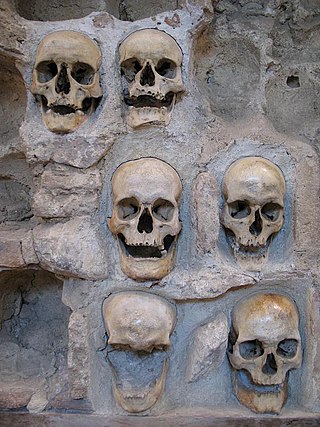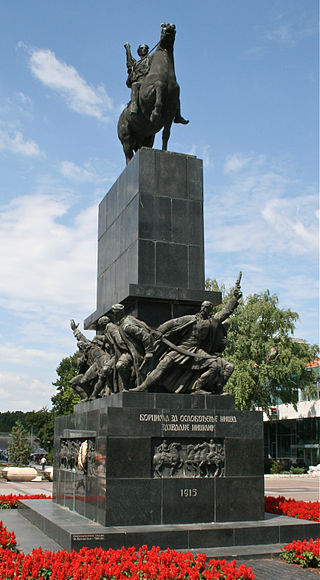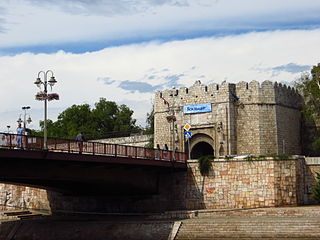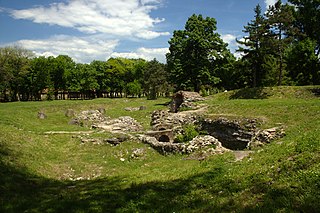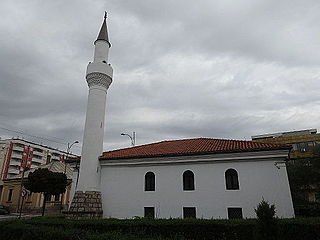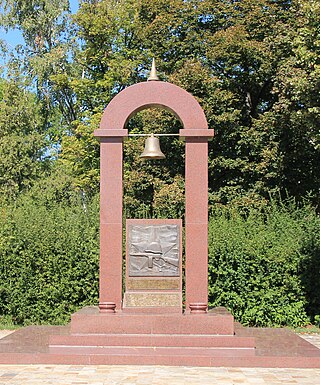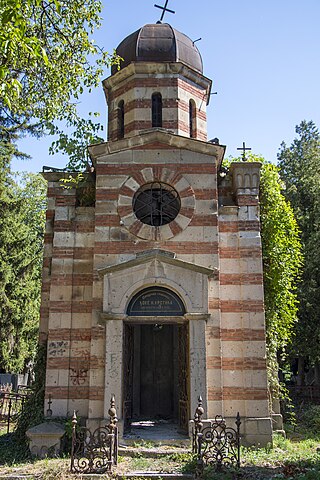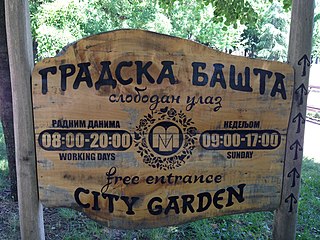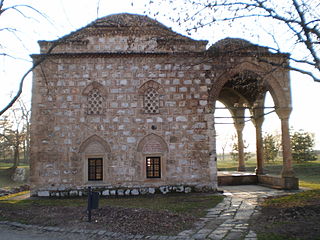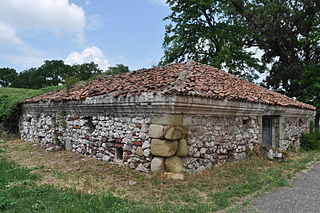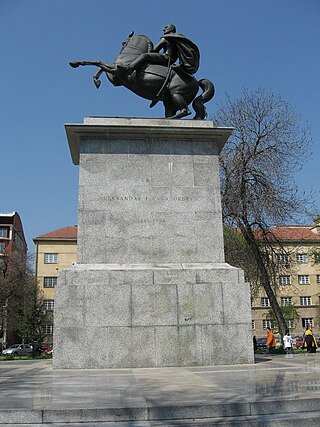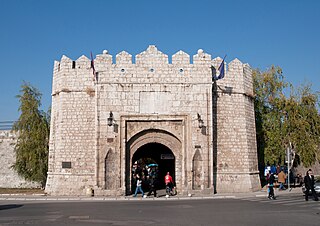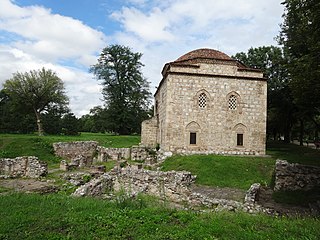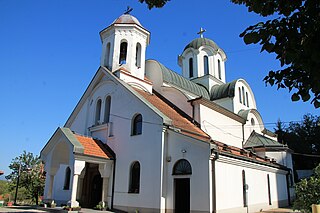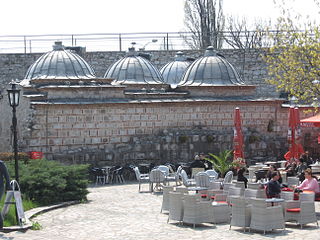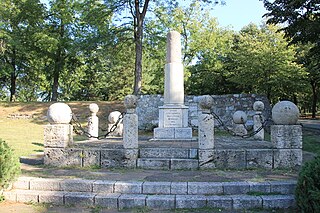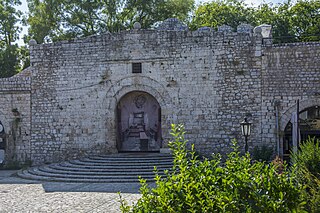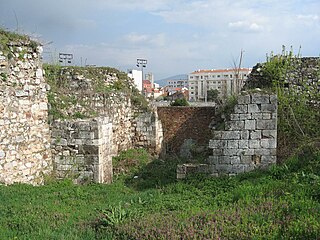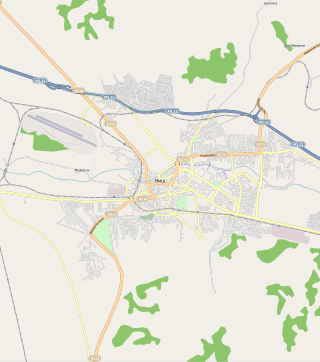22 Sights in Niš, Serbia (with Map and Images)
Legend
Welcome to your journey through the most beautiful sights in Niš, Serbia! Whether you want to discover the city's historical treasures or experience its modern highlights, you'll find everything your heart desires here. Be inspired by our selection and plan your unforgettable adventure in Niš. Dive into the diversity of this fascinating city and discover everything it has to offer.
Sightseeing Tours in NišSkull Tower is a stone structure embedded with human skulls located in Niš, Serbia. It was constructed by the Ottoman Empire following the Battle of Čegar of May 1809, during the First Serbian Uprising. During the battle, Serbian rebels under the command of Stevan Sinđelić were surrounded by the Ottomans on Čegar Hill, near Niš. Knowing that he and his fighters would be impaled if captured, Sinđelić detonated a powder magazine within the rebel entrenchment, killing himself, his subordinates and the encroaching Ottoman soldiers. The governor of the Rumelia Eyalet, Hurshid Pasha, ordered that a tower be made from the skulls of the fallen rebels. The tower is 4.5 metres (15 ft) high, and originally contained 952 skulls embedded on four sides in 14 rows.
2. Споменик ослободиоцима Ниша
The Monument to the Liberators of Nis, locally known as the Horse, is located in the very center of the city, on King Milan Square and marks the period of liberation wars against the Turks, Bulgarians and Germans.
3. Mediana
Mediana is an important archeological site from the late Roman period, located in the eastern suburb of the Serbian city of Niš. It represents a luxurious residence with a highly organised economy. Excavations have revealed a villa with peristyle, thermae, granary and water tower. The residence dates to the reign of Constantine the Great 306 to 337. Although Roman artifacts can be found scattered all over the area of present-day Niš, Mediana represents the best-preserved part of Roman Naissus. In 1979, Mediana was added to the Archaeological Sites of Exceptional Importance list, protected by the Republic of Serbia.
4. Memorial complex „12th February“
Crveni Krst, also known as the Niš concentration camp, was a concentration camp operated by the German Gestapo located in the Crveni Krst municipality of Niš, in German-occupied Serbia. It was used to hold captured Serbs, Jews, Roma and anti-fascists during World War II. Established in October 1941, between 30,000 and 35,000 people were detained within it during the war. It was liberated by the Yugoslav Partisans in 1944. More than 10,000 people are thought to have been killed in the camp over the course of its existence.
5. Niš Fortress
Niš Fortress is a fortress in the city of Niš, Serbia. It is a complex and important cultural and historical monument. It rises on the right bank of the Nišava River, overlooking the area inhabited for longer than two millennia. It was protected by law in May 1948 as it was declared a cultural site of great significance. The current condition of the fortress lists it as one of the best preserved fortifications of this kind in Serbia as well as on the Balkan Peninsula.
6. Грађевина под сводовима и базилика
The building under the vaults and the basilica in the Niš Fortress is one of the archaeological sites and a unique spatial ambient unit on the central plateau of the ancient imperial Nais. Namely, it is a public, representative part of the ancient city, with all the features that characterize the late antique – Tetrachian architecture. Archaeological excavations at this site, in the Niš Fortress, which were carried out from 1982 to 1985, for the first time discovered the material remains of this ancient street and its buildings. Archaeological findings resulting from these excavations indicate that the complex of buildings on the central plateau may have been built in the first decades of the 4th century, and that it can be linked to the reconstruction of the city carried out in Constantine's time.
Wikipedia: Грађевина под сводовима и базилика у Нишкој тврђави (SR)
7. Islam Aga mosque
Islam-aga's Mosque is the only working mosque in Niš, Serbia. There is another in Niš Fortress which is converted into a gallery, and another close to the University Rectorate, that was damaged during the Anglo-American bombing of the city in 1944.
8. Споменик страдалим совјетским војницима
The Monument to the Soviet Soldiers Killed in the Niš Incident is a newly built memorial with the names of the killed Soviet soldiers in the Niš incident on November 7, 1944, built in 2015 in front of the Red Cross Camp in Niš, Spemenik was placed on the site of the removed former pyramidal slab with the engraved names of the fallen soldiers and their remains, after Tito's conflict with the Informbiro.
Wikipedia: Споменик совјетским војницима страдалим у нишком инциденту (SR)
9. Старо гробље
The Old Cemetery Memorial Complex is located in the southern part of the city, administratively belongs to the Municipality of Palilula and is located in the settlement of the same name, which was named after him. It dates back to the time of the Ottoman occupation. The age of the cemetery is indicated by the data from the oldest monuments that have been preserved in the western part.
10. Споменик Нишлијама обешеним од Турака 1821.
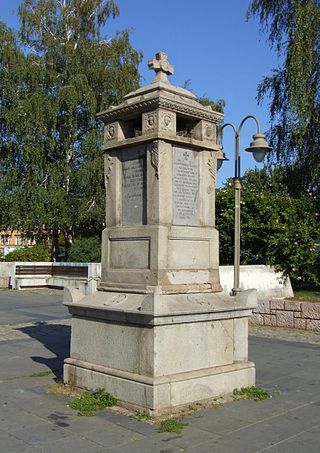
Monument to the Turks hanged by the Turks in 1821. It is located in the center of Niš in front of the fortress bridge. It is rectangular in shape, with a slightly wider and profiled pedestal and a pyramidal end, placed on four lower pillars. With its archaic shape and dimensions, it resembles tombstones.
11. Градска башта
The City Garden in the Niš Fortress is a special ambient and park unit designed as an exhibition, sales and educational space on the southeastern plateau of one of the largest and most representative buildings from the period of the Ottoman Empire and one of the largest fortresses in the Balkans, today a cultural and historical monument of great importance.
12. Салон 77
Salon 77 in Niš is one of the three exhibition spaces (galleries) of the Gallery of Contemporary Fine Arts in Niš. This gallery space is located in the Bali-beg mosque from 1523, in the central part of the Niš fortress. The space with a square base, with 16 windows and a dome on the ceilings, 12 m high, which used to be the Turkish Mosque, with its architectural values and internal vault height of almost 10 m, is very suitable not only for exhibition activities of visual artists, but also for concerts and other acoustic performances.
13. Powder magazine 1
Gunpowder magazines in the Niš Fortress are a ground-floor rectangular building built in the period from 1720 to 1723, by the Ottomans. Originally, they were intended for the accommodation of gunpowder, ammunition, protection of soldiers and defense of buildings in the event of an enemy attack, in the Middle Ages, but in the 21st century, after the realization of the revitalization program of the Niš Fortress, one by one they were turned into a space intended for numerous cultural events.
14. Споменик Краљу Александру
The monument to King Aleksandar Karadjordjevic is located in the center of the city, on the square of the same name in Niš. The monumental monument is the work of academic sculptor Zoran Ivanovic from Belgrade, and it was cast in the foundry "Kuzman" in Smederevo. The pedestal of the monument is carved with the inscription "King Aleksandar Karađorđević 1888 – 1934". The height of the monument is 4.5 meters, on a pedestal 7 meters high and weighing 3.3 tons.
Wikipedia: Споменик краљу Александру Карађорђевићу у Нишу (SR)
15. Istanbul Gate
The Stambol Gate in the Niš Fortress or the Constantinople Gate is one of the four entrances (exits) on the fortified earthen rampart built by the Ottomans in the period from 1719 to 1723. It got its name from the direction of the road that led east, to Stambol.
16. Byzantine street
Byzantijska Street in the Niš Fortress is one of the archaeological sites and a unique spatial ambient unit on the central plateau of the ancient imperial Nais in the immediate vicinity of the Bali-beg Mosque. Namely, it is a public, representative part of the ancient city, with all the features that characterize the late antique – Tetrachian architecture. Archaeological excavations at this site, in the Niš Fortress, which were carried out from 1962 to 1963, for the first time discovered the material remains of this ancient street. Archaeological findings resulting from these excavations indicate that the street on the central plateau may have been built between the 5th and 6th centuries, and that it can be associated with the reconstruction of the city carried out in the post-Constantine time.
17. Црква Светог Николе
The Church of St. Nicholas in Niš is located in the city settlement of Palilula, valuable for its past. Tradition says that the church of St. Nicholas changed his religion six times as a Christian or a Muslim. The church, as an important witness of history, has the status of a cultural monument.
Wikipedia: Црква Светог Николе у Нишу (SR), Heritage Website
18. Turkish bath
The hammam in the Niš Fortress is located next to the Stambol Gate. It was built in the 15th century and is the oldest preserved Turkish building in Niš. It was recorded for the first time in 1498 in the Niš census defter. At that time, two hammams were recorded in Niš: "Ali Bey, son of Michal Bey, and Mehmed Bey, son of Minet Bey."
19. The Monument to Prince Milan
The monument to Prince Milan Obrenović and the liberators of Niš in 1878 is located in the Niš fortress. It was built in 1902 on the occasion of the 25th anniversary of the liberation of Niš and the first anniversary of the death of Prince-King Milan Obrenović
Wikipedia: Споменик кнезу Милану Обреновићу и ослободиоцима Ниша 1878. године (SR)
20. Belgrade Gate
The Belgrade Gate in the Niš Fortress is one of the four entrances (exits), which is not in operation today, on the fortified earthen rampart built by the Ottomans in the period from 1719 to 1723. It got its name from the direction of the road that led west, to Belgrade.
21. Water Gate
The Water Gate in the Niš Fortress or the Jagodina Gate was one of the four entrances (exits), which is not in function today because it is significantly damaged and partly walled up, on a fortified earthen rampart built by the Ottomans in the period from 1719 to 1723. It got its name from the direction of the road that led east, to Stambol.
22. Црква Узвишења Светог Крижа
The Church of the Assumption of the Most Holy Theotokos is located in Donja Vrežina, in the municipality of Pantelej. It is dedicated to the Dormition of the Most Holy Theotokos, which is celebrated on August 28.
Wikipedia: Црква Успења Пресвете Богородице у Доњој Врежини (SR)
Share
How likely are you to recommend us?
Disclaimer Please be aware of your surroundings and do not enter private property. We are not liable for any damages that occur during the tours.
